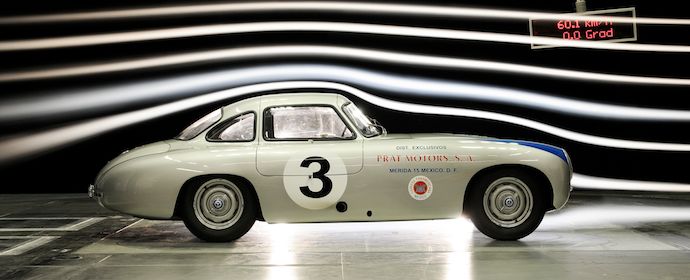New cars are constant objects of study in the wind tunnel. They are subjected to tests in order to optimise them in different ways – for example, to reduce fuel consumption, but also to improve wind noise or splash water flow.
Historical vehicles, on the other hand, are seldom indeed guests in the wind tunnel, for their development has long since been finished. However, the values measured in the wind tunnel are not always available for them, or sometimes there are indeed measured values, but these cannot be compared with the figures obtained in today’s tests.For reasons of historical interest, in January 2012 Mercedes-Benz Classic thus examined two SL model series in the company’s own wind tunnel at its Stuttgart-Untertürkheim plant using modern-day measuring methods – the first SL (W 194 series) from 1952, and the 1954 series-production 300 SL (W 198 I series) sports car. In order to have a contemporary comparison vehicle, a 1951 Mercedes-Benz 300 S (W 188 series), a luxurious, sporty touring car, was also examined. This vehicle had lent some of its technology to the first post-war Mercedes-Benz sports car.
No Subscription? You’re missing out
Get immediate ad-free access to all our premium content.
Get Started



